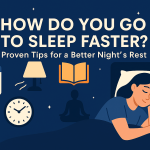How Long Can a Baby Sleep in a Bassinet? Safe Sleep Guidelines for Parents
Welcoming a newborn into your family is an exciting and overwhelming experience, filled with countless decisions about your baby’s safety and comfort. One common question new parents ask is: how long can a baby sleep in a bassinet? Understanding the right time to transition your baby from a bassinet to a crib is key to ensuring safe sleep and supporting your child’s development.
Understanding Bassinets: What Are They and Why Use Them?
A bassinet is a small, cozy sleep space designed specifically for newborns and young infants. Its compact size provides a snug, womb-like environment, helping many babies sleep better during their earliest months.
Parents often choose a bassinet for its convenience—it can be placed right next to your bed, making nighttime feedings and comforting easier. Most bassinets are portable, allowing you to move your sleeping baby from room to room.
How Long Can a Baby Sleep in a Bassinet?
The simple answer: most babies can sleep in a bassinet until they are about 4 to 6 months old. However, the exact length of time depends on several factors, including your baby’s weight, mobility, and the manufacturer’s guidelines for your particular bassinet.
Typical Age Range for Bassinet Use
- Newborn to approximately 4-6 months: Most infants outgrow their bassinet by this age. Some may need to transition sooner, while others may be able to use it a little longer.
- Developmental milestones: If your baby shows signs of rolling over, pushing up on hands and knees, or sitting up, even before 4 months, it’s time to move them to a crib.
Bassinet Weight and Size Limits
Always refer to the manufacturer’s instructions for your specific bassinet. Most bassinets have a recommended weight limit between 15 to 20 pounds (about 7 to 9 kg), but this can vary.
- If your baby exceeds the weight limit: Transition immediately to a crib or another safe sleep space.
- If your baby is tall for their age: If your baby’s head or feet touch the ends of the bassinet, it’s time to transition.
Signs Your Baby Has Outgrown the Bassinet
Not sure whether it’s time to move your baby to a crib? Here are key signs to watch for:
- Rolling over or attempting to roll: Babies who can roll over can easily tip over the sides, making bassinets unsafe.
- Pushing up on hands and knees: If your child pushes up or sits up, the bassinet is no longer safe due to the risk of falling out.
- Exceeding weight or size limits: Always check the bassinet’s weight limit and compare it with your baby’s growth during pediatric checkups.
- Discomfort or restlessness: If your baby seems cramped, frequently hits the sides, or sleeps poorly, these may be signs they’ve outgrown the bassinet.
Safe Sleep Guidelines for Babies
No matter where your baby sleeps, following safe sleep guidelines is crucial to reduce the risk of Sudden Infant Death Syndrome (SIDS) and other sleep-related dangers. The American Academy of Pediatrics (AAP) recommends:
- Place your baby on their back to sleep, for naps and overnight.
- Use a firm, flat sleep surface without soft bedding, pillows, or toys.
- Keep the sleep area free of loose blankets and bumpers.
- Share a room, but not a bed, with your baby for at least the first 6 months.
- Regularly inspect the bassinet for broken or loose parts, and make sure it is assembled securely.
Transitioning from Bassinet to Crib
Moving your baby from a bassinet to a crib is an important milestone. Here’s how to make the transition as smooth as possible:
When to Transition
- When your baby meets or exceeds the weight or size limit for the bassinet.
- If your baby is starting to roll over, push up, or sit unassisted.
- If your baby appears uncomfortable or crowded in the bassinet.
Tips for a Smooth Transition
- Place the crib in your bedroom initially, to maintain the security of proximity.
- Use similar sleep routines, such as swaddling (if appropriate) or using a sleep sack.
- Give your baby time to adjust by allowing supervised playtime in the crib during the day.
Common Questions About Babies Sleeping in Bassinets
Can my baby sleep all night in a bassinet?
Yes, as long as your baby fits safely within the bassinet’s guidelines and follows safe sleep practices, overnight sleep in a bassinet is safe and recommended for the first few months.
Is it safe to use a secondhand bassinet?
It can be, but you must ensure the bassinet meets current safety standards, is not subject to recalls, and is free of broken or missing parts. Always use a firm, well-fitting mattress.
When should a baby move to their own room?
The AAP recommends room-sharing (not bed-sharing) for at least six months and ideally up to twelve months, for the lowest risk of SIDS.
Conclusion: Prioritizing Safe Sleep as Your Child Grows
In summary, most babies can sleep in a bassinet until they’re 4 to 6 months old, or until they reach the bassinet’s weight and mobility limits. Regularly monitor your baby’s growth and development, and always follow safe sleep guidelines. When your child outgrows the bassinet, celebrate this milestone and transition confidently to a crib, knowing you’re supporting their safety and well-being.


